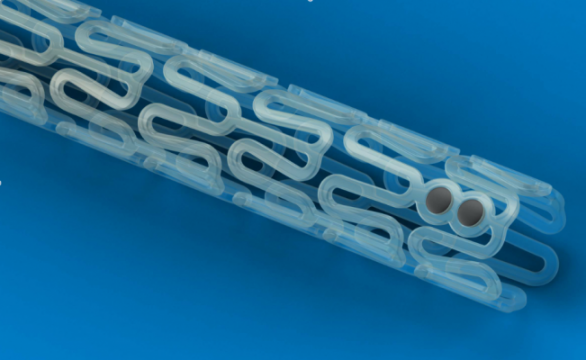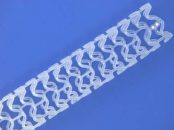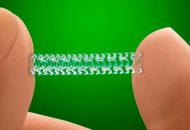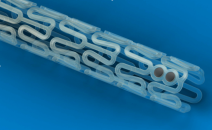Although there are 4 approved bioresorbable scaffolds (BRS) in Europe, experts suggest that current drug-eluting stents (DES) are the best option for coronary angioplasty. These new guidelines jointly published by the European Society of Cardiology (ESC) and the Association of Percutaneous Cardiovascular Interventions (EAPCI) are an update on the use of BRS in clinical practice…
SOLACI CACI 2017 | BVS: from clinical evidence to daily practice
Read articles on the main presentations of the first day of SOLACI-CACI 2017 Congress. See the presentation by Dr. Stephen Ellis entitled “BVS: from clinical evidence to daily practice”. We are interested in your opinion. Please, leave your comments, thoughts, questions, etc., below. They will be most welcome.
BVS: Controvertial Scaffold
Courtesy of Dr. Agustín Vecchia. The advent of resorbable vascular scaffolds (BVS) generated high expectations among interventionists because of its potential advantages over bare metal stents. However, when comparing BVS against the Xience stent, we observed an increased rate of events associated to the first device, to their detriment. Among the reasons behind this poor…
Very Late Thrombosis: Bioresorbable Scaffolds vs. Everolimus-Eluting Metallic Drug-Eluting Stents
This study sought to compare the 2-year outcomes between bioresorbable vascular scaffolds (BVS) and everolimus-eluting metallic drug-eluting stents (EES), since the occurrence of very late thrombosis (thrombosis beyond 1 year after implantation) is an increasing concern in relation to new devices. This meta-analysis was conducted based on 24 studies (BVS: n = 2567 and EES: n = 19,806) reporting the…
Bioresorbable Scaffolds: Promising in Peripheral Territory
Bioresorbable Vascular Scaffolds (BVS) could change the paradigm of peripheral angioplasty according to several small studies suggesting these everolimus eluting devices could significantly improve symptoms in patients with intermittent claudication. [plain] Three year outcomes of the ESPRIT I trial, presented at VIVA 2016 (held in Las Vegas) showed there were no new events between…
BVS: Safe Also in Peripheral Territory
Original Title: Bioresorbable Everolimus-Eluting Vascular Scaffold for Patients With Peripheral Artery Disease (ESPRIT I) 2-Year Clinical and Imaging Results CME. Reference: Johannes Lammer et al. J Am Coll Cardiol Intv. 2016;9(11):1178-1187. This is the first study on humans to assess the bioresorbable everolimus eluting vascular scaffold for the treatment of peripheral artery disease involving…
Chronic total occlusions: Pilot experience with BVS
Original Title: Percutaneous coronary intervention for chronic total occlusion of the coronary artery with implantation of bioresorbable everolimus-eluting scaffolds. Poznan CTO-Absorb Pilot Registry. Reference: Maciej Lesiak, et al EuroIntervention 2016;12:e144-e151 Courtesy of Dr. Carlos Fava. Chronic total occlusion (CTO) is a real challenge and have a success rate of around 80% with trained…
Bioresorbable Scaffold Thrombosis: incidence, risk factors and possible mechanism
Original Title: Bioresorbable Vascular Scaffold Thrombosis. Multicenter Comprehensive Analysis of Clinical Presentation, Mechanisms, and Predictors. Reference: Puricel S et al. J Am Coll Cardiol 2016;67:921-31. Courtesy of Dr. Guillermo Migliaro. Bioresorbable scaffolds (BVS) were introduced in interventional cardiology to avoid late DES complications. However, recent reports suggest an elevated incidence of thrombosis with these new devices.…
Primary PCI with Bioresorbable Vascular Scaffolds
Original Title: One-year Clinical and Computed Tomography Angiographic Outcomes after Bioresorbable Vascular Scaffold Implantation during Primary Percutaneous Coronary Intervention for ST-Segment-Elevation Myocardial Infarction. The Prague-19 Study. Reference: Widimsky P et al. Circ Cardiovasc Interv. 2015 Dec;8(12). Courtesy of Dr. Carlos Fava. Primary PCI is the most common course of treatment for ST elevation myocardial infarction (STEMI)…
Definite/Probable Thrombosis with Bioresorbable Scaffolds
Original Title: Scaffold Thrombosis After Percutaneous Coronary Intervention With ABSORB Bioresorbable Vascular Scaffold. A Systematic Review and Meta-Analysis. Reference: Michael J. Lipinski et al. J Am Coll Cardiol Intv. 2016;9(1):12-24. The authors of this study carried out a systematic review and a meta-analysis to determine the thrombosis risk of the bioresorbable everolimus eluting scaffold ABSORB (Abbott…
- 1
- 2









